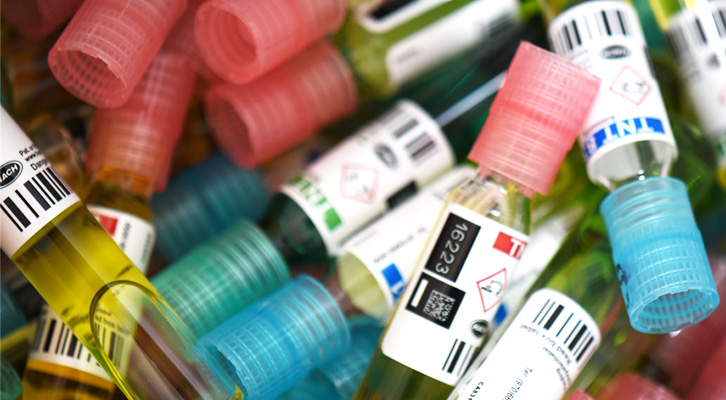Chemical oxygen demand (COD) is the amount of a specified oxidant that reacts with the sample under controlled conditions. Results are defined as the mg of O2‚ consumed per liter of sample. The sample is heated for two hours with a strong oxidizing agent, potassium dichromate (Cr2O72-). Oxidizable organic compounds react reducing the dichromate ion to the green chromic ion. The amount of Cr2O72- is measured colorimetrically with a spectrophotometer. Chemical oxygen demand can be used to estimate biochemical oxygen demand and determine the dilutions needed for the BOD five-day test.
Total COD is run on undiluted samples. For a soluble COD, the samples are filtered through a 0.45 mm filter before analysis to remove biological interference. 2 mL of the sample is pipetted into a COD digestion reagent vial. The vial is then inverted several times to mix (the vial will get hot). The vial is placed in the COD reactor at 150 ° C for two hours. The samples then cool and the samples are tested using a spectrophotometer. The chemical oxygen demand value will be read in mg/L for both total COD (tCOD) and soluble COD (sCOD).
For samples with a concentration of 0 to 150 mg/L, use the low range COD vials. For higher concentrations, the high range COD vials (0-1500 mg/L) should be used. If the COD exceeds 1500 mg/L, the sample should be diluted to bring the results in range.
Chloride is the primary interference. Vials with mercuric sulfate can be used to eliminate chloride interference up to 2000 mg/L Cl–. Samples with higher chloride concentrations should be diluted enough to reduce the chloride concentration below this limit. If the sample is diluted the values are adjusted based on the dilution factor. If the COD testing is for permit reporting, the method including vials with mercury is the EPA approved method.

